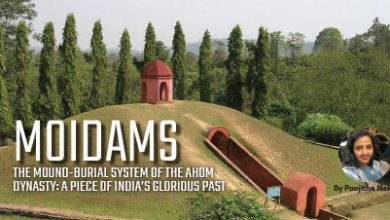Ajanta Caves
Timeless Artistry Carved in Stone

The Ajanta Caves, a UNESCO World Heritage Site located in Maharashtra, India, are a remarkable testament to ancient Indian artistry and spirituality. Carved into a rocky cliff face, these 30 rock-cut caves date back to the 2nd century BCE to the 6th century CE. They are renowned for their stunning frescoes and intricate sculptures that depict the life of the Buddha and various Jataka tales. The caves served as monastic retreats for Buddhist monks, offering a glimpse into the rich cultural and religious practices of the time.
The Ajanta Caves were first discovered in the early 19th century by a British hunting party, but their historical significance dates back to a much earlier period. The caves were constructed in two distinct phases. The first phase, around the 2nd century BCE to the 1st century CE, represents the Hinayana or early Buddhist phase, while the second phase, around the 5th to 6th centuries CE, corresponds to the Mahayana phase, marked by a more elaborate and grandiose style.
These caves were not used continuously but were re-discovered and used intermittently by different groups over the centuries. Their historical context offers a window into the socio-political and religious transformations occurring in India during the early centuries of the Common Era.
The Ajanta Caves comprises of ancient monasteries and prayer halls of different Buddhist traditions carved into a 75-metre (246 ft) wall of rock. The caves also present paintings depicting the past reincarnations of the Buddha, pictorial tales from Aryasura’s Jatakamala, and rock-cut sculptures of Buddhist deities. Textual records suggest that these caves served as a monsoon retreat for monks, as well as a resting site for merchants and pilgrims in ancient India. While vivid colours and mural wall paintings were abundant in Indian history as evidenced by historical records,
The Archaeological Survey of India (ASI), along with the Forest Department and the Government of Maharashtra, manages the buffer zone around the Ajanta caves.

Architectural and Artistic Features
The Ajanta complex consists of 30 caves, each distinct in its function and design. The caves are divided into two broad categories: monasteries (viharas) and chapels (chaityas). The viharas served as residential spaces for monks, complete with living quarters, dining halls, and meditation areas. In contrast, the chaityas were prayer halls that housed stupas—reliquary mounds that are central to Buddhist worship.
Architecturally, the caves exhibit a progression from simple, unadorned structures to more elaborate designs. The early caves are relatively austere, featuring plain interiors and basic stupa enclosures. In contrast, the later caves, particularly those dating from the 5th to 6th centuries CE, are richly decorated with intricate carvings and detailed frescoes.

Murals and Sculptures
One of the most significant aspects of the Ajanta Caves is their murals. These frescoes are considered masterpieces of ancient Indian art and provide a rare and detailed glimpse into the life and beliefs of the time. The murals cover a wide range of subjects, including the lives of the Buddha, various Jataka tales, and daily life in ancient India.
The Jataka tales, which illustrate the Buddha’s previous lives, are particularly noteworthy for their narrative complexity and vivid detail. These stories not only serve religious purposes but also offer historical insights into the social customs, clothing, and architectural styles of the period.
In addition to murals, the Ajanta Caves feature numerous sculptures, including statues of the Buddha in various postures and expressions. These sculptures reflect the artistic development from the early, more abstract forms to later, more naturalistic representations. The use of symbolism in these sculptures also provides valuable information about Buddhist iconography and theology.
The Ajanta Caves are important because they reveal the evolution of Buddhist art and architecture over several centuries. The transition from early, austere cave designs to more elaborate and richly decorated interiors reflects broader changes in religious thought and artistic expression. Additionally, the stylistic and iconographic developments seen in the Ajanta murals and sculptures help trace the influences and exchanges between Indian, Central Asian, and Hellenistic art.
The preservation of the Ajanta Caves also underscores the historical continuity and cultural significance of the Buddhist heritage in India. Despite facing challenges such as weathering and human impact, ongoing conservation efforts aim to safeguard these treasures for future generations.
In summary, the Ajanta Caves are not merely a collection of ancient rock-cut temples; they are a vital piece of India’s cultural and historical mosaic. Their artistic, religious, and archaeological significance continues to captivate scholars and visitors alike, offering profound insights into the ancient world.








